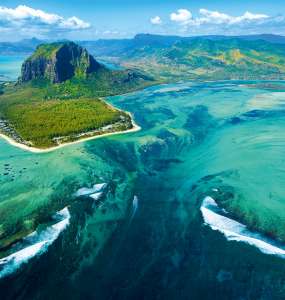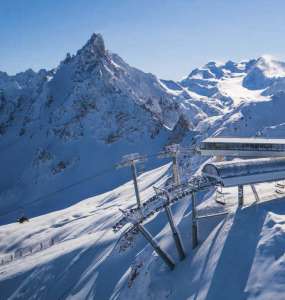Indian Ocean resort regions: understand the seasons
The army of travel gourmets is growing and growing, who are eager to travel without regard to the "high season" or the prestige of the destination. We present a selection of information about seasonal weather conditions in the countries of the Indian Ocean region for those who are making plans or have already decided to spend a vacation in these paradisiacal places.
Australia
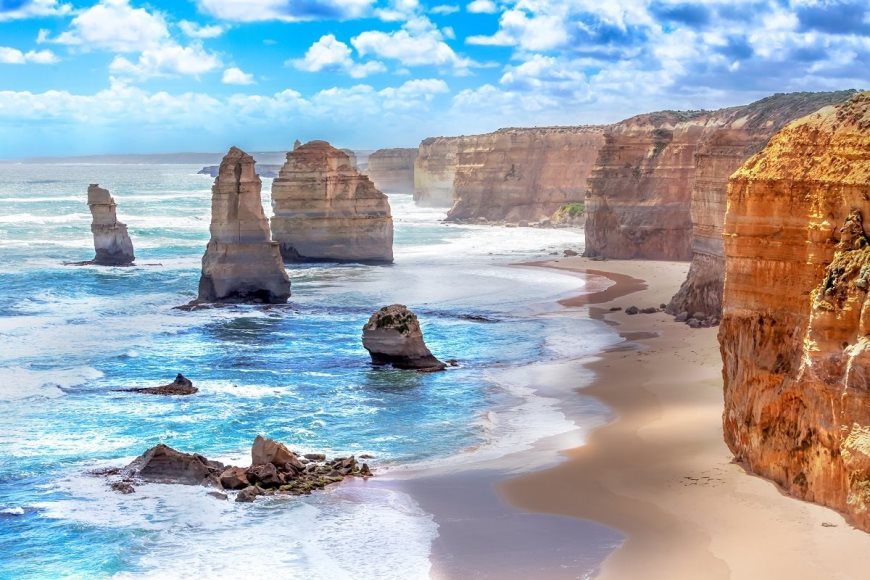
The mainland country is attractive, seductive and packed with tourist attractions throughout the year. Travelers should keep in mind that the rainy season reigns here from December to March. May through October is the dry season and festival time, when there is an opportunity to party, explore local traditions and wander the street markets, especially exciting in the northern part of the continent. Spring (September - November) in is especially good in the south-western regions of the country, where there are plenty of excellent wineries producing wonderful wines that rival the quality of European wines. Wildlife lovers will enjoy watching the giants of the sea - whales.
Australian summer pleases visitors and locals from December to February and is best spent on the beaches around Sydney. Autumn weather (March - May) will draw those wishing to fish to freshwater bodies and the open sea.
The grandiose country, which has a huge territory and a variety of climatic zones, offers tourists to spend the winter (June - August) skiing in the state of Victoria or looking at the ocean beauty of the coast of Queensland and the Great Coral Reef, armed with a mask, snorkel or scuba diving.
| City | Indicators | January | February | March | April | May | June | July | August | September | October | November | December |
| Temperature (°C) | 23 | 22 | 22 | 19 | 15 | 13 | 12 | 13 | 17 | 20 | 19 | 22 | |
| Precipitation (mm) | 160 | 170 | 140 | 90 | 80 | 70 | 60 | 40 | 30 | 90 | 80 | 120 | |
| Darwin | Temperature (°C) | 29 | 29 | 30 | 32 | 30 | 29 | 29 | 30 | 31 | 31 | 31 | 31 |
| Precipitation (mm) | 400 | 340 | 310 | 90 | 20 | 0 | 0 | 0 | 10 | 70 | 140 | 220 | |
| Temperature (°C) | 25 | 24 | 22 | 19 | 15 | 11 | 11 | 12 | 14 | 18 | 23 | 22 | |
| Precipitation (mm) | 40 | 40 | 30 | 40 | 40 | 40 | 30 | 50 | 40 | 50 | 60 | 40 | |
| Temperature (°C) | 28 | 27 | 27 | 23 | 21 | 16 | 15 | 16 | 18 | 20 | 27 | 27 | |
| Precipitation (mm) | 2 | 10 | 10 | 40 | 100 | 170 | 160 | 110 | 60 | 40 | 20 | 10 | |
| Portland | Temperature (°C) | 17 | 18 | 17 | 16 | 14 | 12 | 11 | 10 | 11 | 13 | 16 | 16 |
| Temperature (°C) | 27 | 26 | 25 | 24 | 18 | 15 | 16 | 16 | 21 | 22 | 23 | 26 | |
| Precipitation (mm) | 100 | 110 | 130 | 100 | 90 | 130 | 60 | 80 | 50 | 70 | 80 | 70 |
India
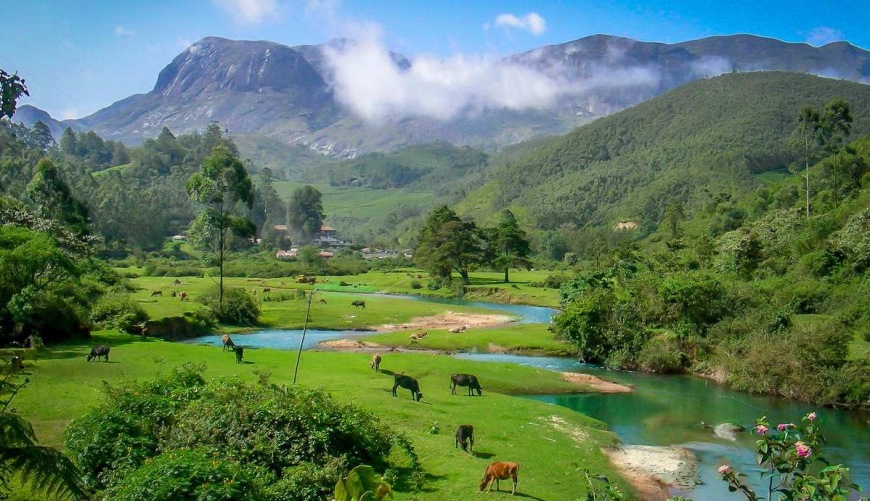
This fairy-tale country, sung in myths and tales, has always beckoned travelers with its mystery, sages and stunning nature. But is also known for its hot and humid climate, which should be especially considered by people who are hardy to "panaya". The hottest period lasts from March to May, so it is preferable to spend it vacationing in the mountainous regions of the country. In summer, the "lord of spices" is flooded with rains, which go on for several hours in a row and bring the humidity to 100%, which prevents the rapid acclimatization of the country's guests to local conditions. Autumn is also full of rain, but winter is the best time to travel to India, when nature gives vacationers sunny and dry weather. Attention surfers! The ideal time to conquer the big waves of the Indian Ocean is from late spring to early autumn, when they rise to a height of up to 5 meters.
| City | Indicators | January | February | March | April | May | June | July | August | September | October | November | December |
| Temperature (°C) | 31 | 31 | 32 | 33 | 33 | 30 | 28 | 28 | 29 | 31 | 32 | 32 | |
| Precipitation (mm) | 0,2 | 0,1 | 1,2 | 11 | 112 | 868 | 994 | 512 | 251 | 124 | 30 | 16 | |
| Temperature (°C) | 33 | 33 | 34 | 33 | 32 | 30 | 31 | 31 | 31 | 32 | 32 | 32 | |
| Precipitation (mm) | 9 | 18 | 55 | 97 | 97 | 340 | 111 | 104 | 109 | 123 | 129 | 39 |
SOUTH AFRICA
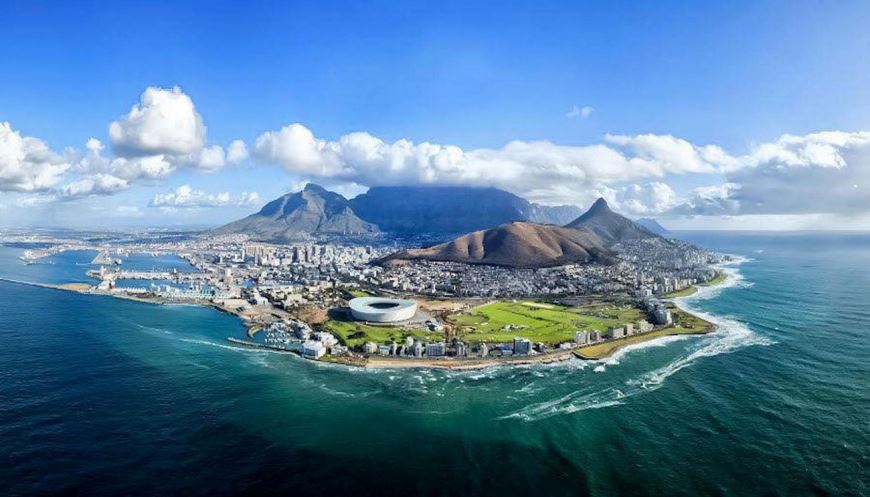
"High season" in the falls in the South African summer, its peak is from November to February. In the capital of the country Cape Town the maximum daily temperature is about +35 degrees, in winter it varies from +10 ° C in the morning and up to +25 ° C in the afternoon, there is a lot of precipitation.
But spring (September - October) in this area is wonderful - nature is rapidly blossoming washed by winter rains and fantastic landscapes appear before the eyes of delighted tourists in the full range of shades of green.
When traveling to the Cape of Good Hope, keep in mind that the winds there blow throughout the year, they are warm but very strong. Johannesburg, Durban and their surrounding regions fall into the rainy season in January and February, but the resorts along the Garden Route delight with beautiful weather and natural splendor throughout the year.
| City | Indicators | January | February | March | April | May | June | July | August | September | October | November | December |
| Temperature (°C) | 28 | 28 | 28 | 25 | 24 | 22 | 22 | 23 | 23 | 24 | 24 | 27 | |
| Precipitation (mm) | 55 | 61 | 75 | 41 | 68 | 11 | 34 | 25 | 53 | 60 | 73 | 74 | |
| Temperature (°C) | 26 | 26 | 24 | 22 | 19 | 16 | 16 | 16 | 18 | 20 | 22 | 24 | |
| Precipitation (mm) | 9 | 7 | 16 | 44 | 47 | 121 | 65 | 76 | 41 | 26 | 30 | 13 |
Zimbabwe
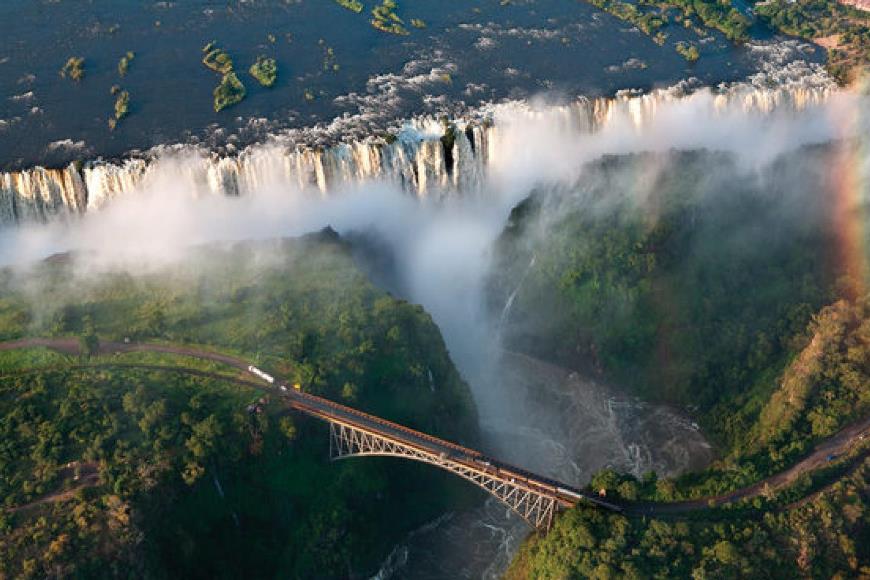
Although has no direct access to the ocean, it is an attractive place for lovers of unspoiled nature, which the country's government and locals reverently protect in a multitude of National Parks and reserves. Separate regions are set aside for safari fans. In the north of the republic the climate is subequatorial, and in the south - tropical. The weather is characterized by 3 seasons: mild summer with comfortable temperature lasts from November to March, when there is no strong heat and gradually accumulating clouds herald the approach of seasonal rains. Then, from April to June, a relatively cool winter follows, with slight frosts possible in the mountainous areas. Winter is replaced by a hot and equally dry spring, characterized by temperatures up to +40°C.
| City | Indicators | January | February | March | April | May | June | July | August | September | October | November | December |
| Temperature (°C) | 25 | 26 | 26 | 24 | 23 | 21 | 22 | 25 | 28 | 30 | 28 | 27 | |
| Precipitation (mm) | 243 | 202 | 117 | 44 | 19 | 1,3 | 2 | 1,3 | 3,5 | 22 | 125 | 258 |
Kenya
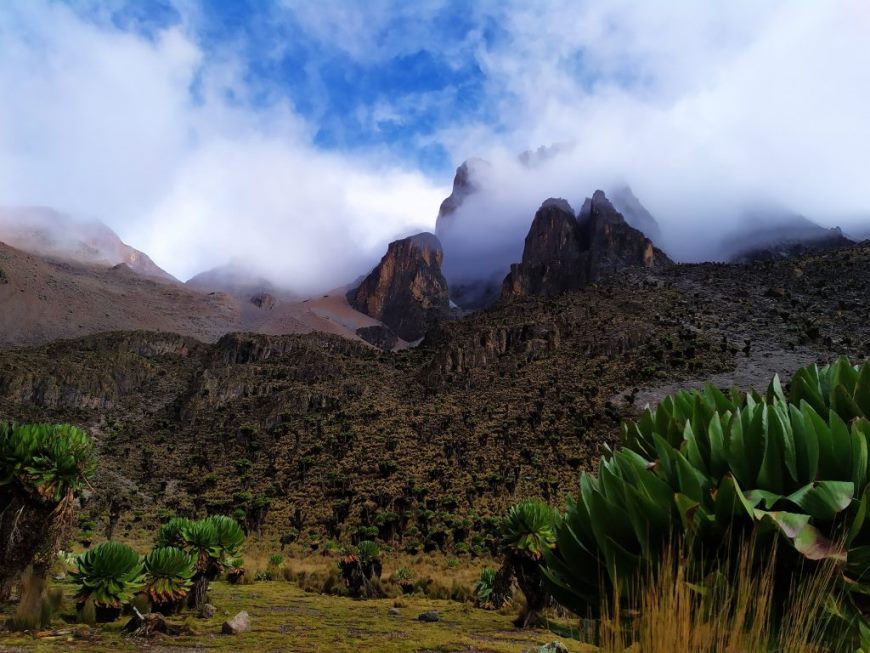
The priority time of year to visit equatorial is winter, when the prolonged rains end and warm, rain-free weather sets in. Spring has mild microclimates but is rainy with high humidity, which is hard on people suffering from GCC. Rains "get tired" to wash Kenya only by June, summer and fall in this region are hot, with rare precipitation. September is dry, but from October onwards there are short rains.
| City | Indicators | January | February | March | April | May | June | July | August | September | October | November | December |
| Temperature (°C) | 29 | 29 | 29 | 29 | 27 | 26 | 27 | 27 | 27 | 28 | 28 | 29 | |
| Precipitation (mm) | 25 | 18 | 64 | 196 | 320 | 119 | 89 | 64 | 64 | 86 | 97 | 61 |
Tanzania and Zanzibar
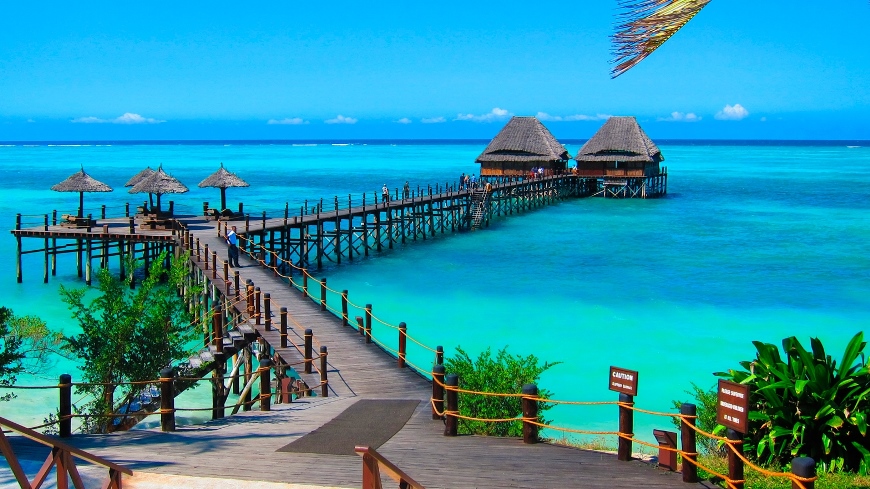
The pristine nature of magnetically attracts tourists from all over the world and the most successful period for coming to the country is winter (June - August), then the daytime air is moderately warm, and at night it is pleasantly cool, the water in the ocean is comfortable for bathing and is +25 ° C. The temperature rises in September and at the end of the month the rains begin to fall, except for the southern regions, where they will come later and last until April, bringing incredible humidity and humidity. By September, the air temperature rises and at the end of the month in the country begins to rain, except for the southern regions, where they will come later and last until April, bringing with them incredible humidity and stuffiness. And on the island of Zanzibar, rainfall stops as early as November.
It is hot in Tanzania from December till March, the Indian Ocean warms up to +29 °С, strong gusty winds blow and plankton comes to the coast, that complicates the process of bathing.
Since April, the season of "long rains" begins throughout the country, except for the south, where dry weather is established. Travelers need to be especially prudent during this period, as the possibility of "catching" an infectious disease increases and malarial mosquitoes are very active.
Nature is most favorable for tourists visiting the islands of and from July to October and from December to March.
| City | Indicators | January | February | March | April | May | June | July | August | September | October | November | December |
| Temperature (°C) | 31 | 31 | 31 | 30 | 28 | 29 | 27 | 28 | 29 | 30 | 30 | 30 | |
| Precipitation (mm) | 78 | 52 | 131 | 269 | 176 | 42 | 31 | 27 | 28 | 66 | 132 | 116 | |
| Zanzibar | Temperature (°C) | 29 | 29 | 28 | 27 | 27 | 26 | 26 | 26 | 27 | 27 | 28 | 28 |
| Precipitation (mm) | 58 | 66 | 147 | 320 | 289 | 53 | 27 | 30 | 40 | 66 | 170 | 139 |
Mauritius
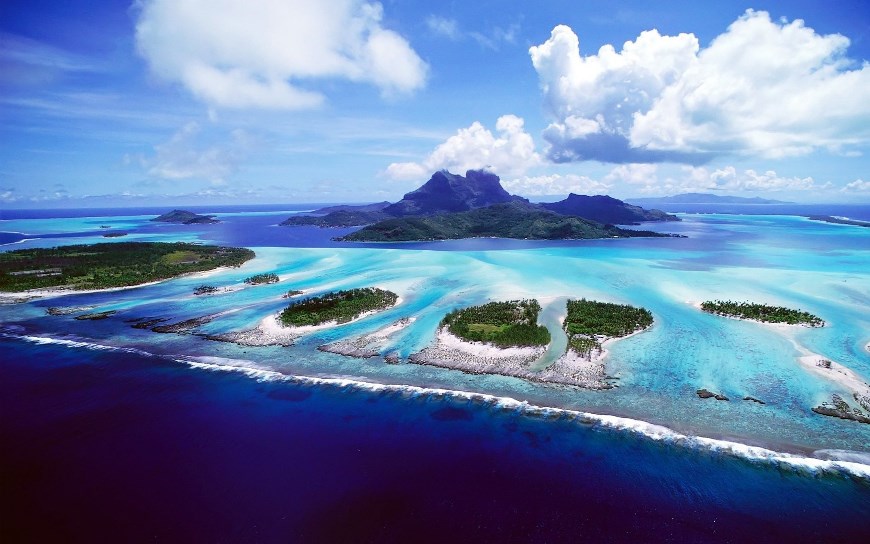
Tropical is famous for sultry and full of moisture island summer (November - April), especially from February to March, when short-term cyclones with gusty winds and heavy rains are not uncommon.
In winter (June - September) in Mauritius, the temperature drops and strong winds blow, for recreation tourists in this period is better to choose places in the western and northern part of the island. The thermometer is lowest at night (+17) in July-August, while the daytime temperature remains comfortable (+25).
The warmer regions are the north and west of the resort island, with temperatures higher on the coast than in the central part of the country.
Suitable time to explore the ocean depths comes from September to January, and from November to April and by June-July comes the hour of surfers, fishermen with excellent bite will be throughout the calendar year, but the most notable trophies await avid fishermen from September to April.
| City | Indicators | January | February | March | April | May | June | July | August | September | October | November | December |
| Temperature (°C) | 31 | 30 | 30 | 29 | 28 | 26 | 25 | 25 | 27 | 28 | 30 | 30 | |
| Precipitation (mm) | 82 | 83 | 82 | 82 | 82 | 82 | 77 | 79 | 77 | 76 | 76 | 79 | |
| Temperature (°C) | 30 | 30 | 30 | 29 | 28 | 26 | 25 | 25 | 26 | 27 | 29 | 30 | |
| Precipitation (mm) | 79 | 82 | 82 | 80 | 79 | 78 | 77 | 76 | 78 | 76 | 77 | 79 | |
| South | Temperature (°C) | 28 | 28 | 28 | 27 | 26 | 25 | 24 | 24 | 25 | 26 | 28 | 29 |
| Precipitation (mm) | 84 | 84 | 84 | 85 | 81 | 78 | 77 | 78 | 77 | 78 | 78 | 80 |
Madagascar
.jpg)
The world's fourth largest island is characterized by two distinct seasons: the dry season lasts from May to October and the wet season from November to April. The eastern part of the country receives more rainfall during the rainy season, while the south and southwest are the driest areas of the island. The period from January to March is not the most optimal time to visit , as you risk the whole vacation soaking under heavy rains, but by mid-April precipitation decreases significantly, humidity drops, and the temperature drops. This is the signal to the beginning of the tourist season, swimming in the ocean water is comfortable and pleasant.
During the winter months (June-August), daytime temperatures in different parts of the island range from +21 degrees Celsius in the center and up to +28°C in the west, with the onset of darkness in Antananarivo the thermometer can creep down to +11°C, and in its western resorts, the indicators will be at +21°C.
From September it gets hotter and until mid-October travelers can enjoy a comfortable beach vacation, but then the southeast trade wind comes to the island, and with it prolonged rains and prolonged heat. For example, in semi-desert Tulear maximum temperature peaks reach +32 ° C, but precipitation is much less than at the same time in Antananarivo. The water in the ocean "boils" and boils from storm winds, which does not please bathers, divers and fishermen.
| City | Indicators | January | February | March | April | May | June | July | August | September | October | November | December |
| Antananarivo | Temperature (°C) | 26 | 26 | 26 | 25 | 23 | 21 | 20 | 21 | 24 | 26 | 27 | 26 |
| Toliara | Temperature (°C) | 33 | 33 | 33 | 32 | 30 | 28 | 28 | 28 | 30 | 31 | 31 | 32 |
| Precipitation (mm) | 95 | 89 | 36 | 18 | 16 | 15 | 6 | 6 | 8 | 12 | 22 | 97 |
Maldives
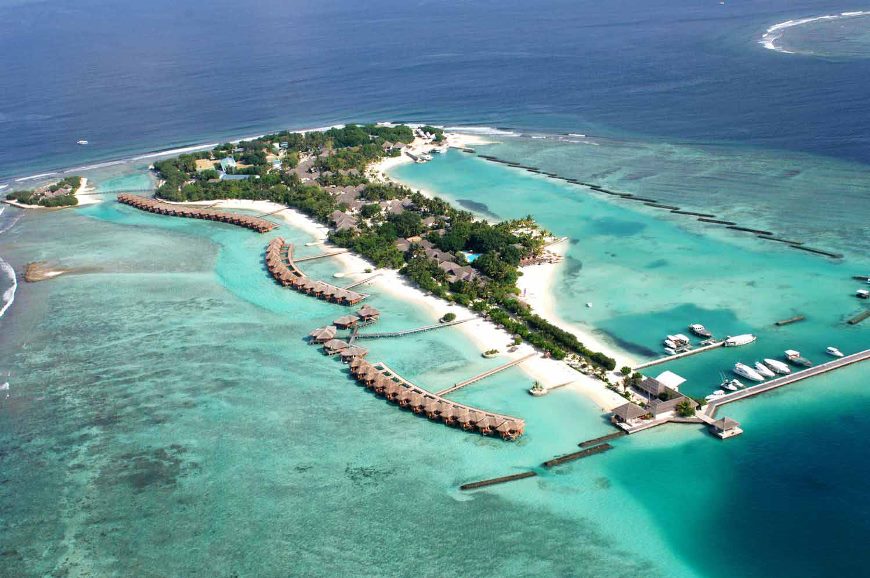
The immaculate is famous for its pleasant microclimate throughout the year, the average temperature is +28 ° C, and seasonal rainfall is formed under the influence of steady winds. Evening-night showers are noisy from May to September and are accompanied by a powerful southwest monsoon "hulhang", but by the morning awakening of tourists the coast is already dry and suitable for sunbathing and bathing. From November to April, the northeast monsoon "iruvai" brings dry and warm weather.
The islands are under the influence of winds, which must be taken into account for those wishing to engage in water sports. So for surfing the best periods: February - April and September - November, diving favors the time from January to April, successful fishing awaits fishermen from September to May.
| City | Indicators | January | February | March | April | May | June | July | August | September | October | November | December |
| Male | Temperature (°C) | 30 | 30 | 31 | 32 | 31 | 30 | 30 | 29 | 29 | 30 | 31 | 31 |
| Precipitation (mm) | 174 | 118 | 89 | 109 | 157 | 78 | 38 | 70 | 110 | 136 | 126 | 257 |
Reunion
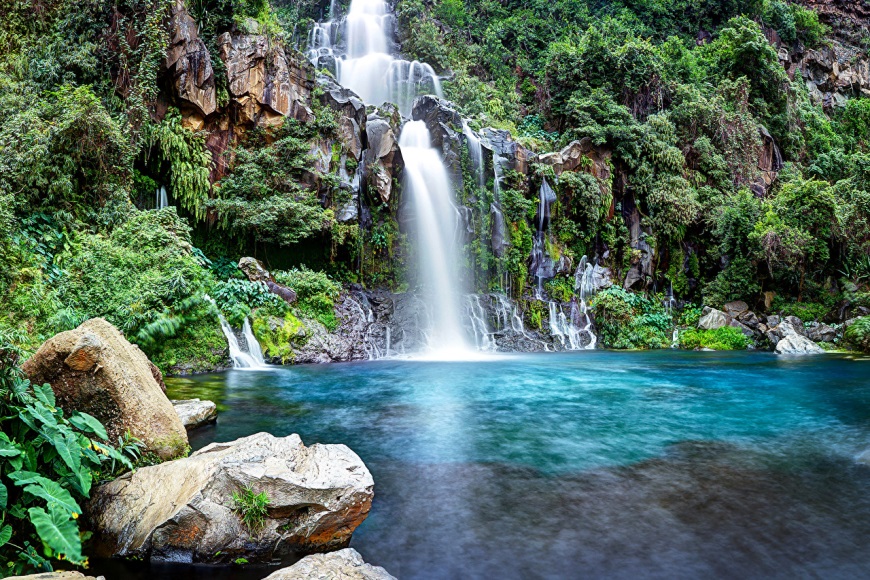
The French overseas department of is a great all-season destination for beach tourism with a tropical oceanic climate. Rainfall peaks in the hot summer, which runs from November to April, and comfortable weather conditions on the island are established from May to October, when the dry and relatively cool winter (+25 ° C during the day and at night +18 ° C). Adaptation to local weather conditions is easier for tourists than in other regions of the Indian Ocean due to more mountainous terrain and monsoons.
| City | Indicators | January | February | March | April | May | June | July | August | September | October | November | December |
| Temperature (°C) | 25 | 25 | 25 | 22 | 21 | 19 | 19 | 19 | 21 | 23 | 22 | 22 | |
| Precipitation (mm) | 153 | 153 | 144 | 93 | 39 | 144 | 57 | 63 | 93 | 42 | 33 | 117 |
Seychelles
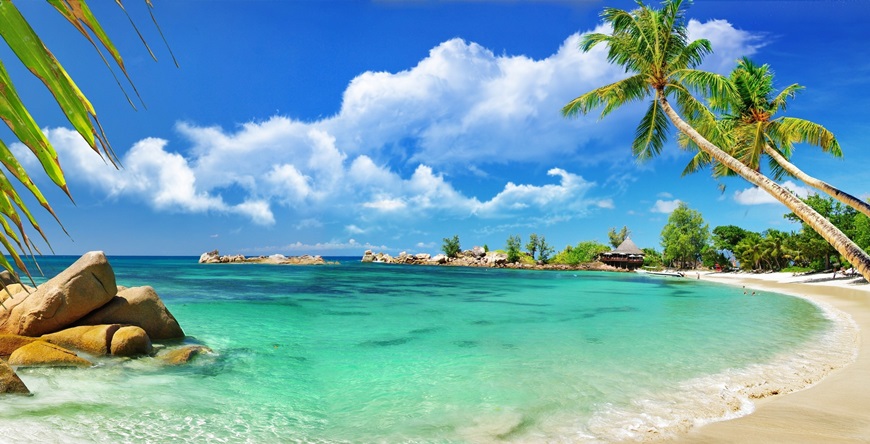
From December to May the are hot, rainfall is short-lived and usually rains in the morning, and the last month of spring is one of the most comfortable in terms of weather conditions. From June to November the Seychelles are "cool", July is characterized by dry weather, ideal vacation in this month on windless beaches in the north-western part of the islands.
But October is favorable for diving and snorkeling, surfers and windsurfers should catch their waves from May to September, the fishing season lasts all year round, and travelers arriving in Seychelles from November to March will be lucky to see the laying of eggs by Seychelles turtles.
| City | Indicators | January | February | March | April | May | June | July | August | September | October | November | December |
| Temperature (°C) | 30 | 30 | 31 | 32 | 31 | 30 | 30 | 29 | 29 | 30 | 31 | 31 | |
| Precipitation (mm) | 174 | 118 | 89 | 109 | 157 | 78 | 38 | 70 | 110 | 136 | 126 | 257 | |
| Beau Vallon | Temperature (°C) | 30 | 30 | 31 | 32 | 31 | 30 | 30 | 29 | 29 | 30 | 31 | 31 |
| Precipitation (mm) | 174 | 118 | 88 | 105 | 155 | 73 | 35 | 71 | 110 | 132 | 126 | 259 | |
| Temperature (°C) | 30 | 30 | 31 | 32 | 31 | 30 | 29 | 29 | 29 | 30 | 31 | 31 | |
| Precipitation (mm) | 178 | 116 | 91 | 109 | 161 | 71 | 39 | 67 | 120 | 131 | 122 | 246 | |
| Temperature (°C) | 29 | 30 | 30 | 31 | 30 | 29 | 29 | 28 | 28 | 29 | 30 | 30 | |
| Precipitation (mm) | 176 | 112 | 85 | 110 | 148 | 72 | 42 | 75 | 115 | 148 | 129 | 220 | |
| Temperature (°C) | 29 | 29 | 30 | 31 | 31 | 29 | 29 | 28 | 28 | 29 | 30 | 30 | |
| Precipitation (mm) | 188 | 111 | 85 | 106 | 149 | 68 | 43 | 83 | 118 | 141 | 137 | 229 |
Sri Lanka
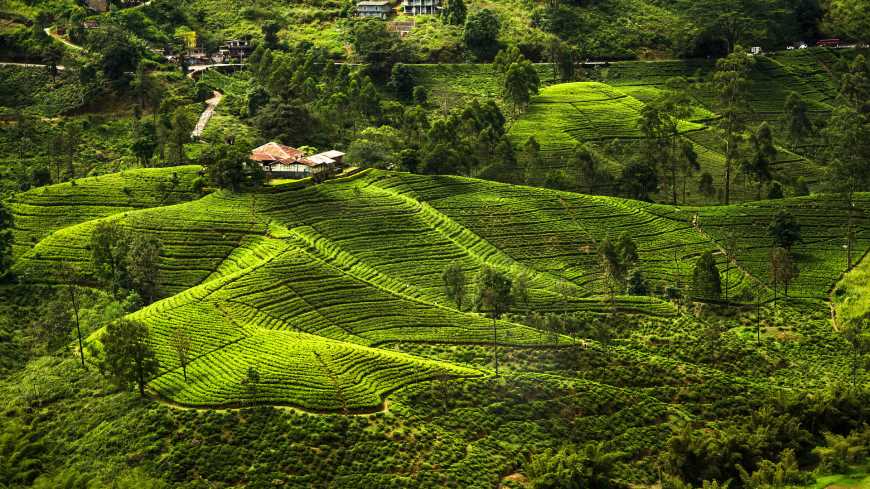
The small island of is famous for its topography and climatic diversity, picturesque landscapes and excellent hotels. Tourists traveling to the southwestern part of Ceylon, as the country used to be called, should stock up on raincoats and umbrellas, because from May to September the rainy season reigns here, in the northeastern part of the island - precipitation begins in December and does not leave the region until March.
Winter months are convenient for rest in the western and southwestern part of Sri Lanka, and in summer it is preferable to choose resorts along the eastern and northeastern beaches of the "tropical paradise", as travelers have been calling the island for many years. In winter the weather is sunny, the waters of the Indian Ocean are amazingly clear and pleasantly enveloping warmth, and most importantly there are no jellyfish!
Surfing and kiting fans hunt for strong waves on the southwest and south coasts of the island from April to November, and the calm ocean waters on the beaches of the eastern region beckon divers and all those wishing to observe the life of whales in their natural habitat.
| City | Indicators | January | February | March | April | May | June | July | August | September | October | November | December |
| Temperature (°C) | 32 | 32 | 33 | 33 | 32 | 30 | 30 | 30 | 30 | 31 | 32 | 32 | |
| Precipitation (mm) | 82 | 81 | 109 | 139 | 357 | 555 | 288 | 370 | 290 | 267 | 227 | 165 | |
| Trincomalee | Temperature (°C) | 28 | 30 | 32 | 34 | 34 | 34 | 34 | 34 | 34 | 33 | 31 | 29 |
| Precipitation (mm) | 100 | 92 | 64 | 100 | 131 | 51 | 77 | 128 | 116 | 248 | 256 | 184 |


